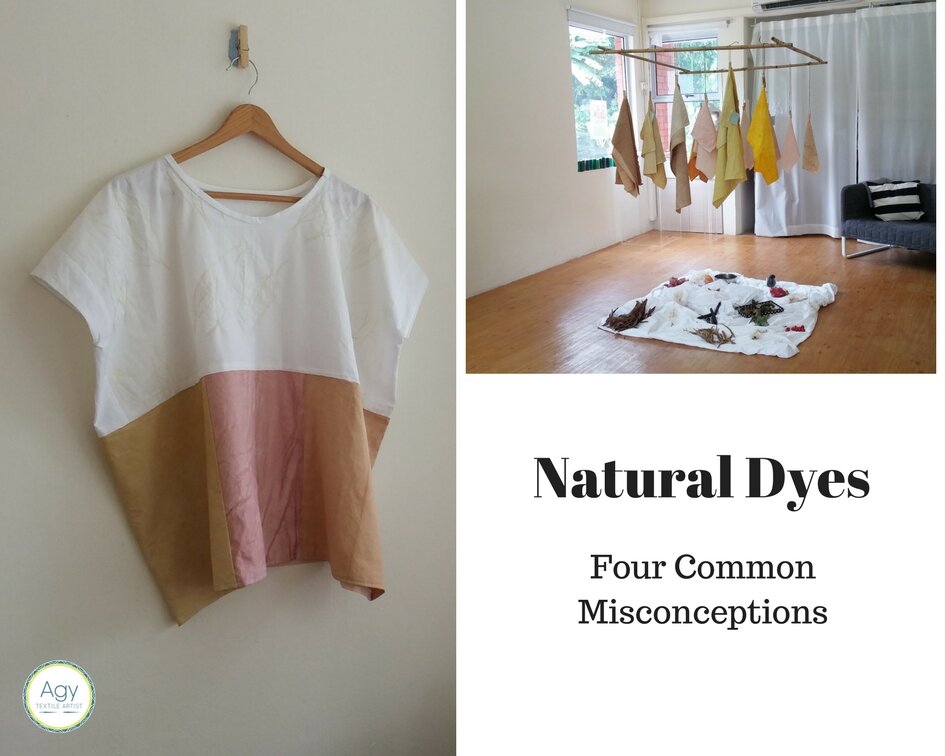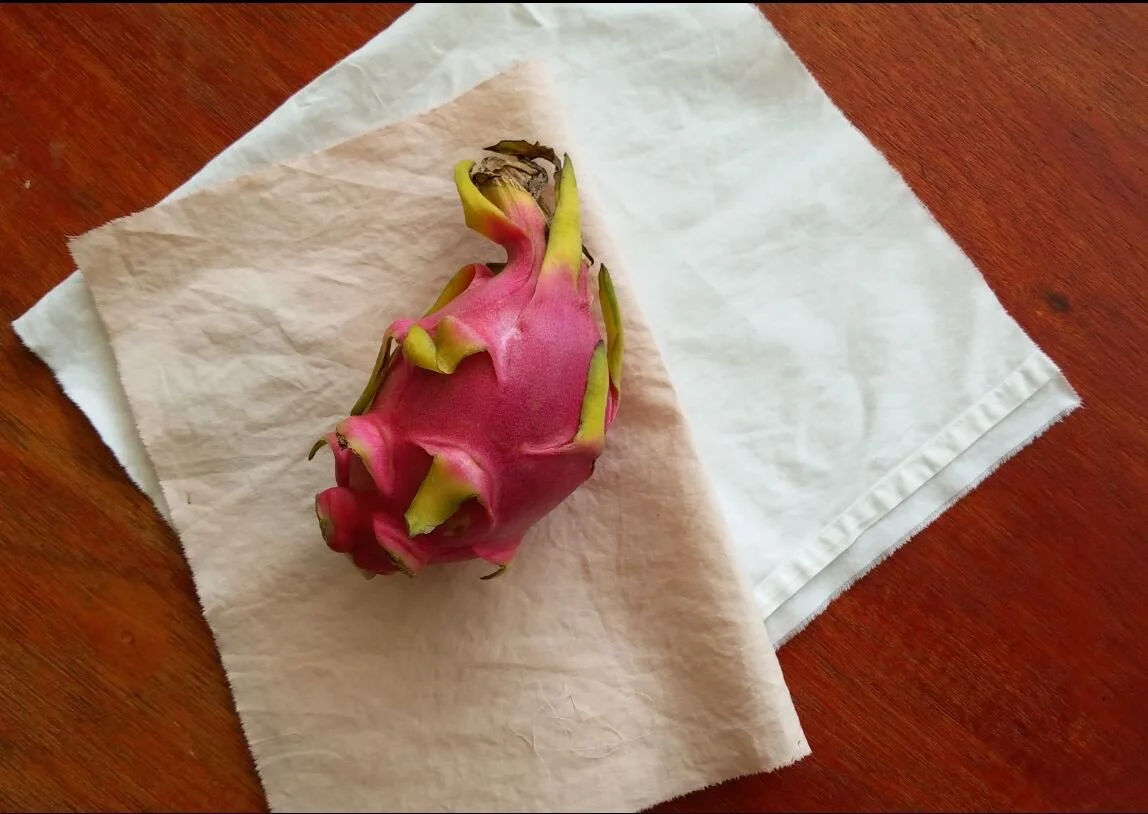Misconceptions of Natural Dyes
Ladies and gentlemen, I have finished my art residency at L'Observartoire.
Yes, one month is over and I can't believe how fast it went. The open studio was very successful and the dyed and upcycled pieces sparked conversations about nature, sustainable fashion and food waste. I would like to thank Isabelle Desjeux and Blue House International School for giving me the wonderful opportunity to carry out my experiments at the studio. They were such a supportive and welcoming group. Special thanks also goes to the Pantry at the school, the educators, the parents and children, Kitchen by Food Rebel and Native Bar for supplying the much needed food scraps. Thank you. Thank you also to Muriel Boutin-Becuwe for helping to source for the hotel bedsheets that would have otherwise been sent to the landfill.
Having started the dyeing in January 2017, the journey does not end here (although I think I would like to take a rest!). There are so many things I would like to do, but there also so many things that I learnt and would like to share here. The first is to quell the misconceptions that I hear about natural dyeing.
Natural Dyes
Common Misconceptions About Natural Dyes
a) Natural dyes have no environmental impact
We often get misled by the word "natural". Although the dyes come from nature, it doesn't mean that the process of extracting them and applying them to the fabric has no environmental impact. For one piece of fabric (60cm x 60cm), I had to:
- scour it to get rid of oils, wax and dust
- mordant it and then rinse
- make a dye pot and dye the fabric before giving it a final rinse.
Throughout this process, I had to heat my pot for over 3 hours and use copious amounts of water. Just imagine this going on in a factory! So who says there is no environmental impact?
b) There are no chemicals in natural dyes
What is a chemical? A chemical is any substance that contains matter be it naturally or synthetically made. Natural dyes contain chemicals - mangifera indica is the chemical from mango leaves that produces the yellow green colour, while the dye in onion skins is 3,5,7,4 - tetrahydroxyantocyanidol or Pelargonidin. In fact, water and even sugar is a chemical, large amounts of which would be toxic to us.
Chemicals are used to help the dyes adhere to the fibers of a piece of fabric - alum, iron sulphate, copper sulphate, tin and chrome have all been used in the dyeing process. Without them the colours would not be light or colour fast. However, due to environmental and safety reasons, copper, tin and chrome are no longer used.
c) Vinegar and salt are mordants
During the open studio, many people asked me whether I used vinegar or salt as mordants. The answer is no because they are not mordants. Rather, vinegar is used to shift the pH of the dye pot and this is how you achieve different shades of natural dye colour from one source. Vinegar is also used when applying synthetic dyes so that there is an even take up of dye.
Salt on the other hand is linked to fixing the colours of synthetic dyes such as Dylon. If you would like to make rust dye then vinegar and salt are your best friends!
d) Natural dyes are dull
While the majority of natural dyes (based on my experiments in Singapore for the past year) end to give brown, at this residency I have been able to extract bright yellow, pinks and orange. The dullness may occur over time if no mordant is used or if an iron mordant is used - iron sulphate tends to give a "sadder" version of a colour.
Over-boiling a dye pot could create a colour duller than expected. My favourite dye is the yellow green from mango leaves. However, dyeing it for over an hour tends to change the colour to brown.
Colours that I have achieved:
Mango leaves, Mangifera indica. L. - yellow green
Rukum masam, Flacourtia inermis Roxb - muted pink
Eucalyptus leaves (immersive and eco print) and bark, Eucalyptus camaldulensis Dehnh - rich brown
Golden shower tree pods, Cassia fistula - pale brown
Yellow onion skins - deep orange
Red onion skins - pale orange
Coffee grounds - very pale brown
Avocado seeds and skins - tones of pink
Blue pea flower, clitoria ternatea - blue
Dragon fruit - pale pink
I'm definitely looking forward to adding more to this list....


